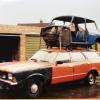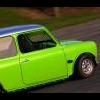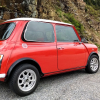Hi, I have a second hand (nearly new) set of 7.5 Disc Calipers, ready for a Subframe and Engine replacement. I have just checked the pistons using compressed air. With some wood between the pistons, one caliper seems to work fine, i.e. both pistons move in and compress the wood. One the other caliper, one of the pistons (and it's always one isn't it), was stuck. I tried locking the moving piston in but still the second one would not move. Then I removed the bleed nipple and blew air in expecting it to come out of the nipple hole and it did not. I then blew air into the bleed nipple hole and hey presto the piston that was not moving slid out lovely. Now when I put the nipple back in or out only one piston moves (the one that moved first) the one on the opposite side of the bleed nipple does not want to operate? So the piston is not stuck it just won't move when air is forced into the main brake hose hole, but will if I force air in through the bleed nipple hole? Could it be theres no brake fluid in one caliper but there is in the other?
Edited by JonnyAlpha, 03 September 2021 - 01:38 PM.






















